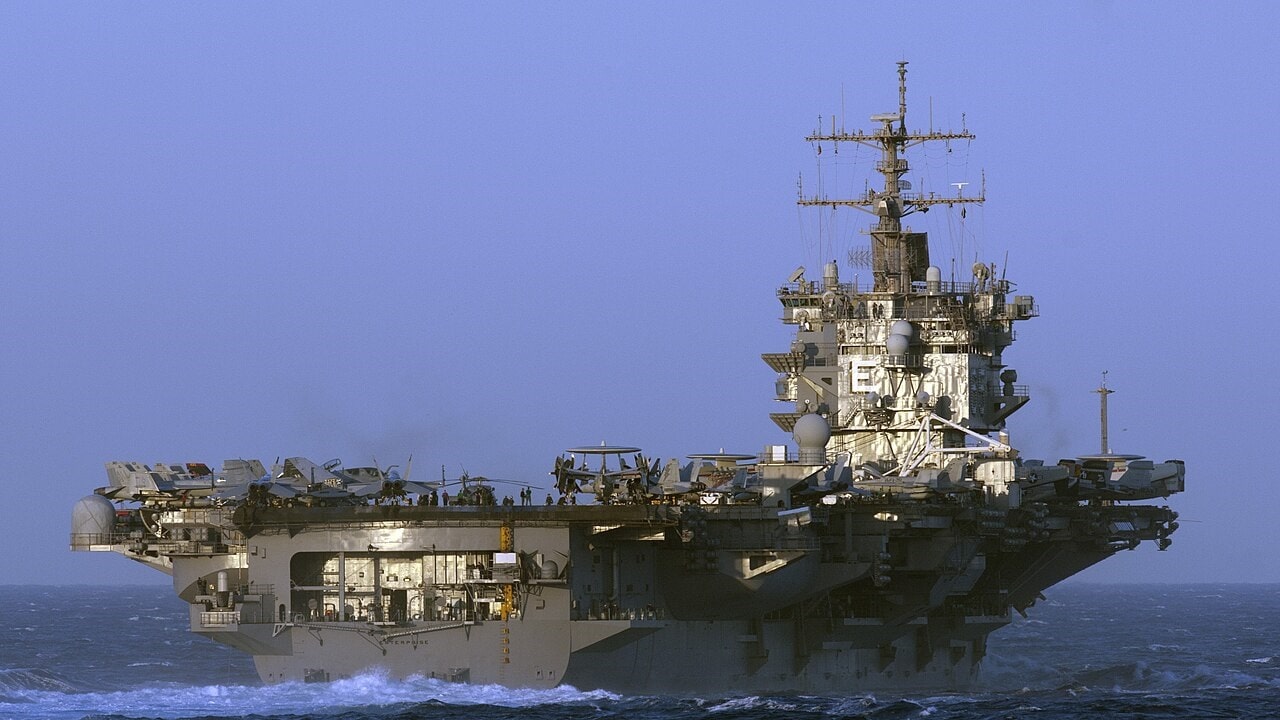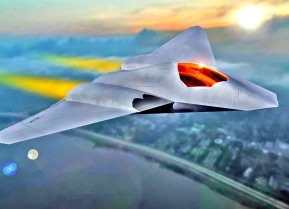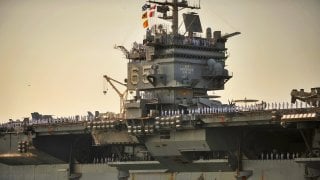USS Enterprise: The Navy Nuclear-Powered Aircraft Carrier That Ran Aground
In 1983, a significant moment for U.S. Navy families turned dramatic when the USS Enterprise ran aground just 1,000 yards from shore, delaying the homecoming of its crew by several hours.
Summary and Key Points: In 1983, a significant moment for U.S. Navy families turned dramatic when the USS Enterprise ran aground just 1,000 yards from shore, delaying the homecoming of its crew by several hours.
-The 90,000-ton nuclear-powered carrier missed the edge of a ship channel in San Francisco Bay due to cloudy, windy conditions and required the assistance of nine tugboats to free it.
-The incident caused $17 million in damage and led to the relief of Captain Robert Leuschner.
-The USS Enterprise, known as "The Big E," has a storied history as the world's first nuclear-powered aircraft carrier.
1983 Grounding of USS Enterprise: What Went Wrong?
One of the most momentous occasions for U.S. Navy families is the homecoming of a vessel. Sailors finally return from deployments out at sea that sometimes last months, and family members and friends wait for their arrival.
The ship’s crew sport their sharpest uniforms as they eagerly await their return to land.
In 1983, just such a moment was jarringly interrupted when the USS Enterprise ran aground a mere 1,000 yards out from the shoreline. In a photograph released by the Naval Institute, the massive carrier tilts slightly to its side, with its crew positioned on the deck.
Roughly 3,000 friends and family members could see the incoming vessel from the pier, yet their eight month-long separation from their loved ones would be frustratingly lengthened by several hours.
USS Enterprise Runs Aground: What Happened?
Following the USS Enterprise’s 10th WESTPAC deployment in the early 1980s, the 90,000-ton nuclear-powered carrier ran aground on a sandbar in San Francisco Bay.
The vessel missed the edge of a ship channel 400 yards wide while approaching port in cloudy, windy weather.
It reportedly took nine military and civilian tug boats to effectively rock the Enterprise off a sandbar by the later afternoon. Around an hour and a half later, the USS Enterprise finally docked at Alameda.
According to UPI, “An official of the civilian San Francisco Bar Pilots Association said a civilian pilot had been in charge of steering the ship as it sailed under the Golden Gate Bridge but had turned over command to a Navy pilot before the Enterprise went aground.” Following the incident, divers spent nearly 400 man-hours underwater to inspect any potential damage.
The Aftermath
The grounding was obviously embarrassing, and details immediately emerged about what caused it. As detailed by Task and Purpose, the ship’s captain, Robert Leuscher, experienced a challenging cruise.

“The navigator alerted him to the proximity of Cortes Bank and plotted a course correction. At that time Captain Leuschner was distracted by what turned out to be a false report of a gunman below decks. During the precious moments when communications and awareness were tied up, no one noticed the carrier’s approach to the bank.” Leuschner was later relieved from duty after it was confirmed that the grounding caused $17 million in damage.
The Original USS Enterprise and Its Namesake
As the world’s first nuclear-powered carrier, the USS Enterprise has a legendary connotation. The vessel’s predecessor, the USS Enterprise (CV-6), was the sixth aircraft carrier to enter service with the U.S. Navy, in 1936.

It was one of three carriers, along with USS Saratoga and USS Ranger, commissioned prior to the war. According to experts, that USS Enterprise, dubbed “The Big E,” was declared sunk by the Japanese government on several occasions during the war. The carrier’s survival prompted the nickname “The Grey Ghost.”
The carrier’s successor was also given the nickname “The Big E.” At over 1,000 feet long, the Enterprise is the longest naval vessel ever built.
About the Author
Maya Carlin is an analyst with the Center for Security Policy and a former Anna Sobol Levy Fellow at IDC Herzliya in Israel. She has by-lines in many publications, including The National Interest, Jerusalem Post, and Times of Israel. You can follow her on Twitter: @MayaCarlin.
All images are Creative Commons or Shutterstock.


